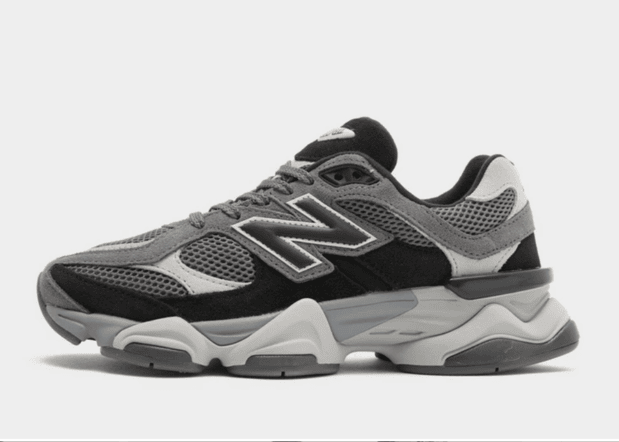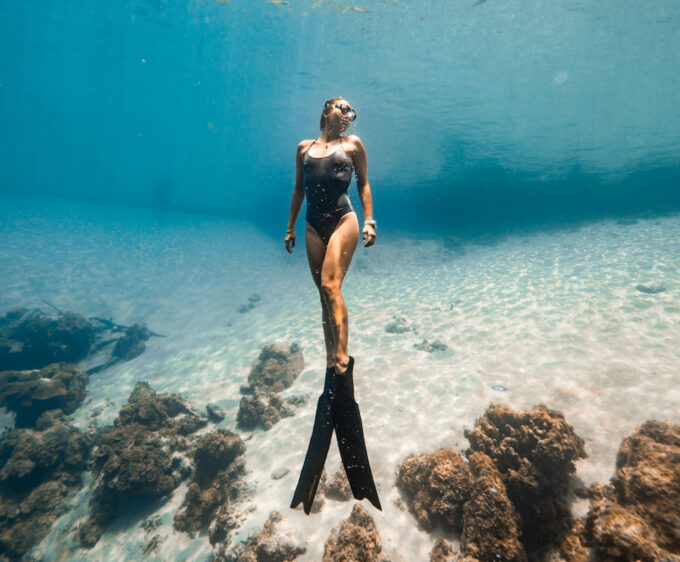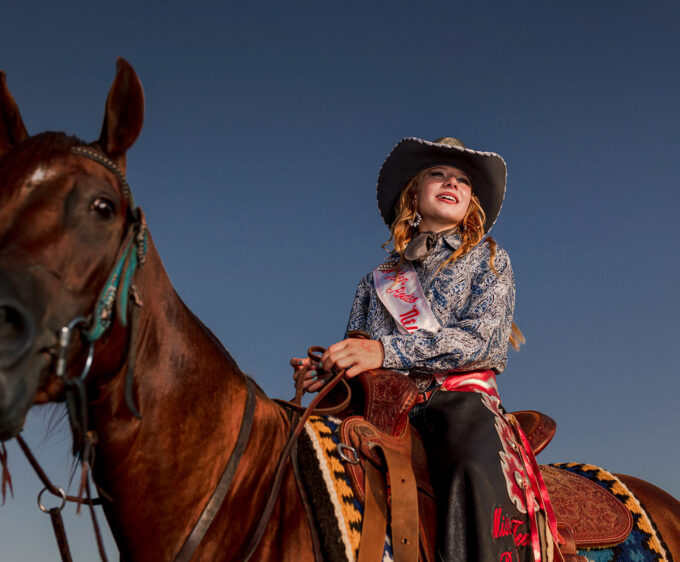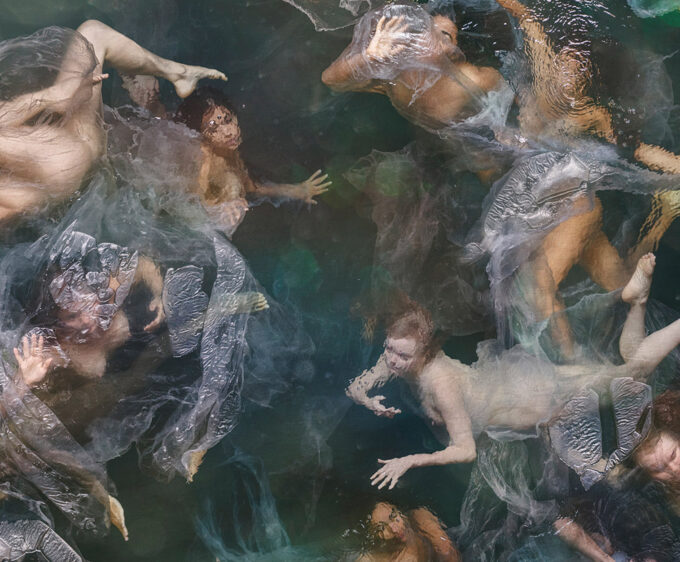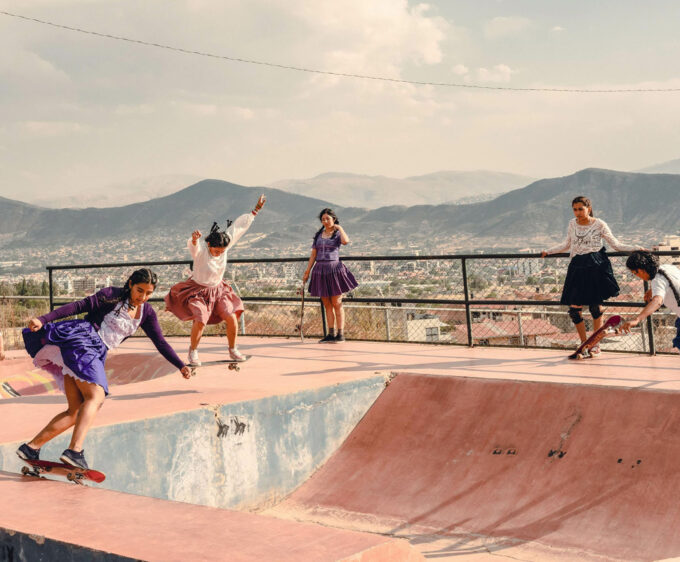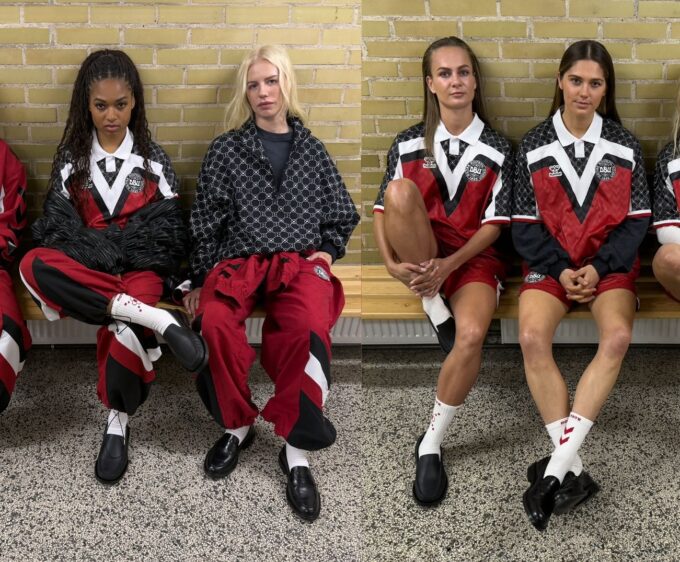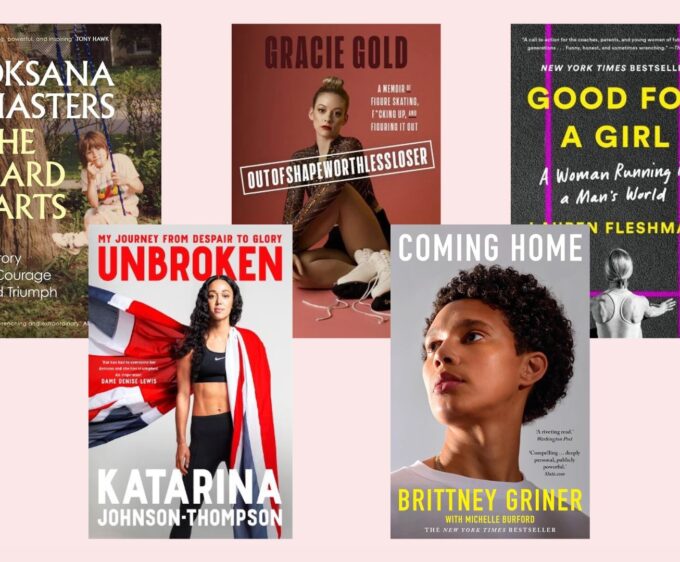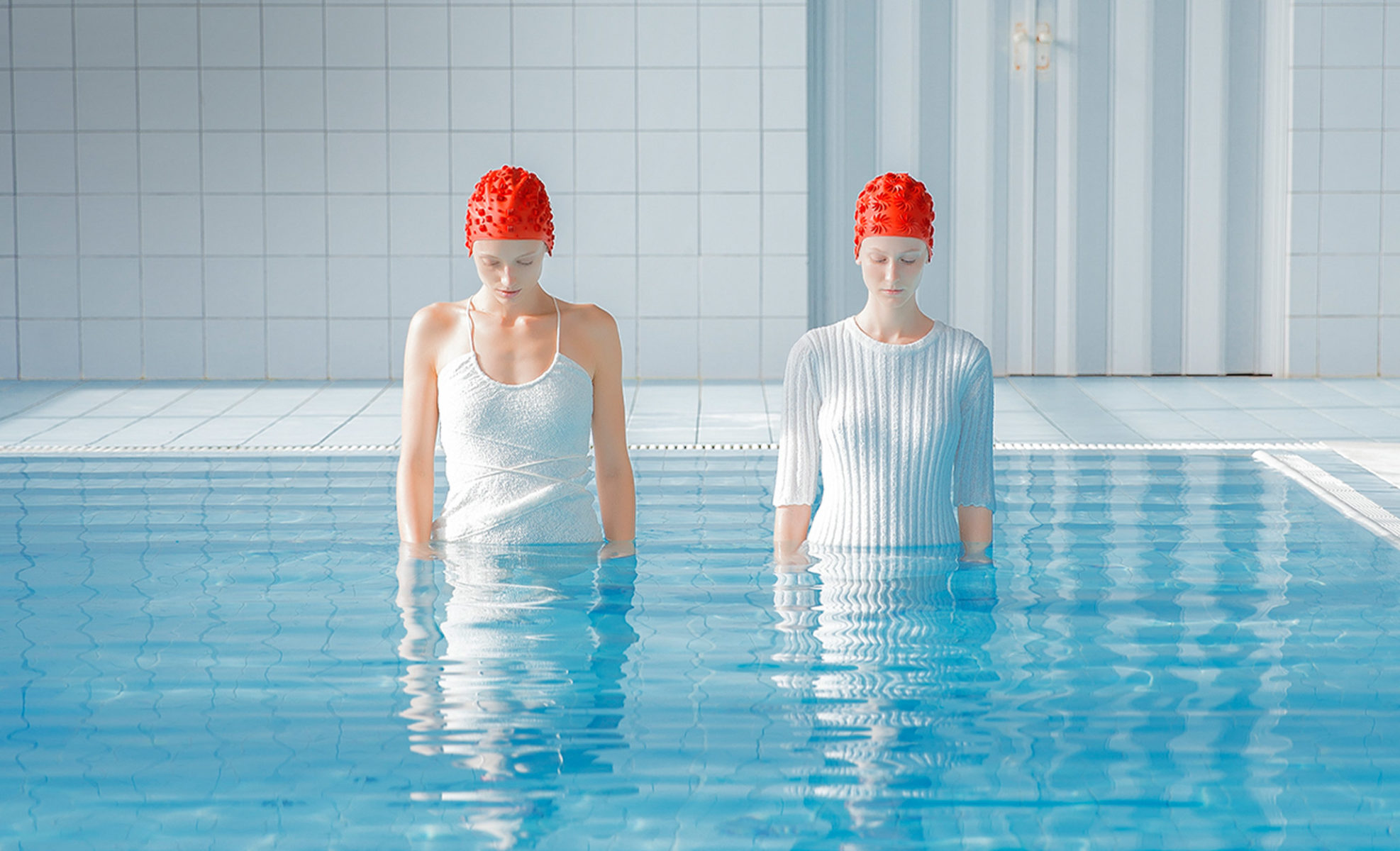
Swimming Pools With Mária Švarbová
Minimalism, the mundane and a meticulous eye. We speak to the photographer about mining the past and present to architect awe-inspiring sporting scenes
By Ashleigh Kane
Photography by Mária Švarbová
Photographer Mária Švarbová was born in Slovakia just one year before the fall of the Communist regime. While her own memories of that year are largely forgotten, the imagery she creates is steeped in the aesthetics and nostalgia of Communism’s legacy. Her highly produced images utilise original Socialist props, costumes, and buildings to recreate and elevate everyday spaces – from a doctor’s office, a butcher’s shop, and a swimming lesson – and turn them into spectacles of geometry, colour and atmosphere.
Švarbová’s previous studies in restoration and archeology aided her vision, and her meticulously planned and orchestrated scenes have won her high acclaim. Fascinated by humans and the environments that they inhabit, through these functional, cinematic, and scrupulously constructed images, Švarbová has patented her own genre of otherworldly portraiture. Under the title of ‘FUTURO_RETRO’ – which she named her 2019 book – her images transcend linear time, bridging the past and future, to architect a series of self-contained worlds.
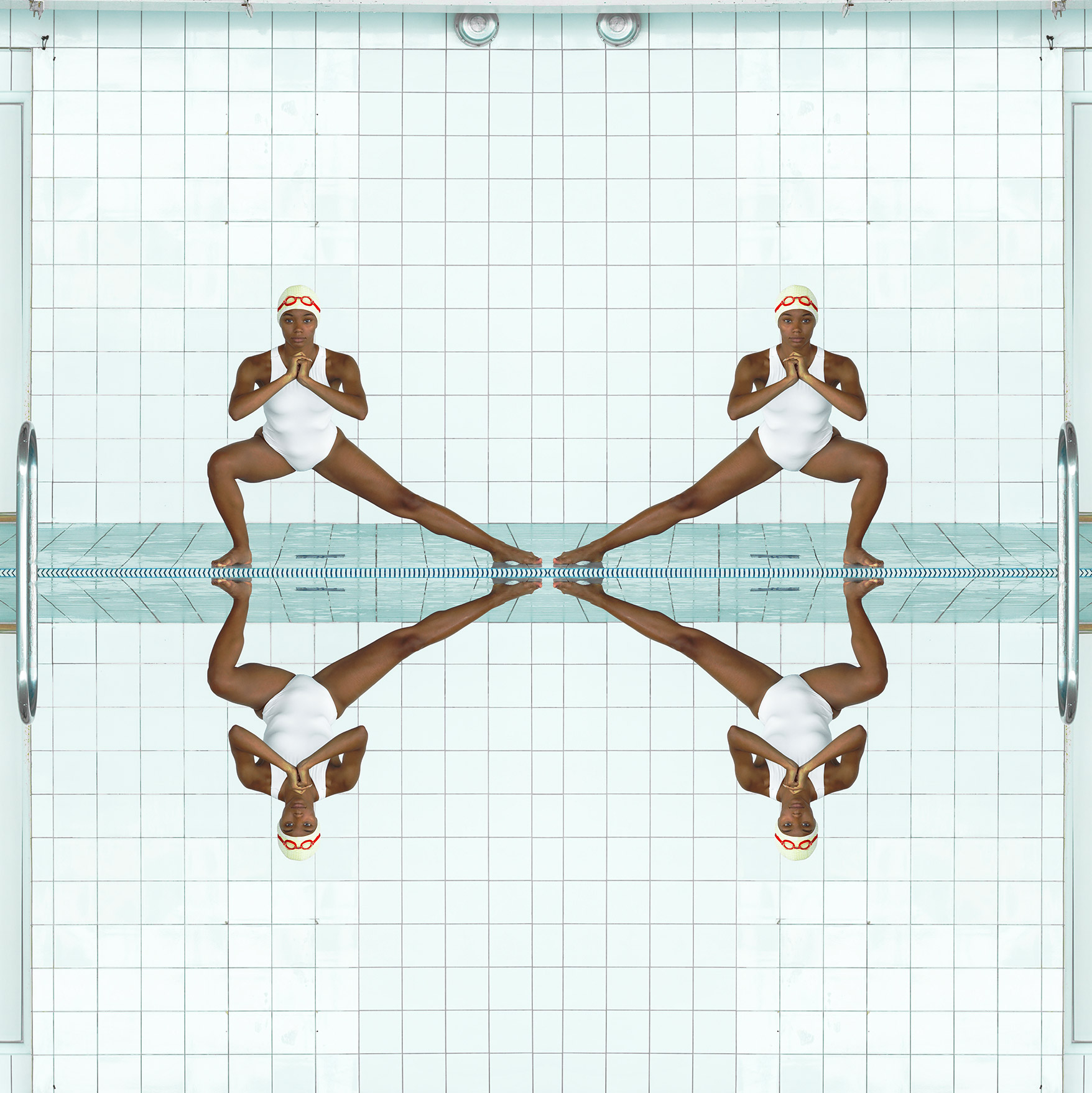
Her largest body of work ‘Swimming Pool’ and its sub series ‘Girl Power’ were collectively shot across four years and feature more than 120 photographs taken at local swimming centres. Inspired by the architecture and the light which falls in these spaces, Švarbová’s swimming scenes morph into optical illusions – swimmers multiply into synchronised, symmetrical visions – and lend the series an overarching sense of unity, hope, and womanhood. In October 2021 Maria released ‘Swimming Pools’, which is an extension of her original concept, but it features different strands of thematic content including female empowerment, a more intimate view and relationship between models and the space around them and also Maria’s artistic expression of movements in feminism and the BLM movement.
‘Lost In the Valley’, her first project outside of her home country, takes Švarbová’s vision from Slovakia to California’s Death Valley desert. An uncanny series which continues to examine people and their surroundings, Švarbová’s figures, lost in the Valley, appear dream-like as they collide with the impossible. A swimmer prepares to dive into the sand and a woman dressed in a Communist-style costume leans against a utility pole. For Švarbová, there are no answers here, just an invitation to fall deep into your imagination – as her figures themselves do – and make of this what you will.
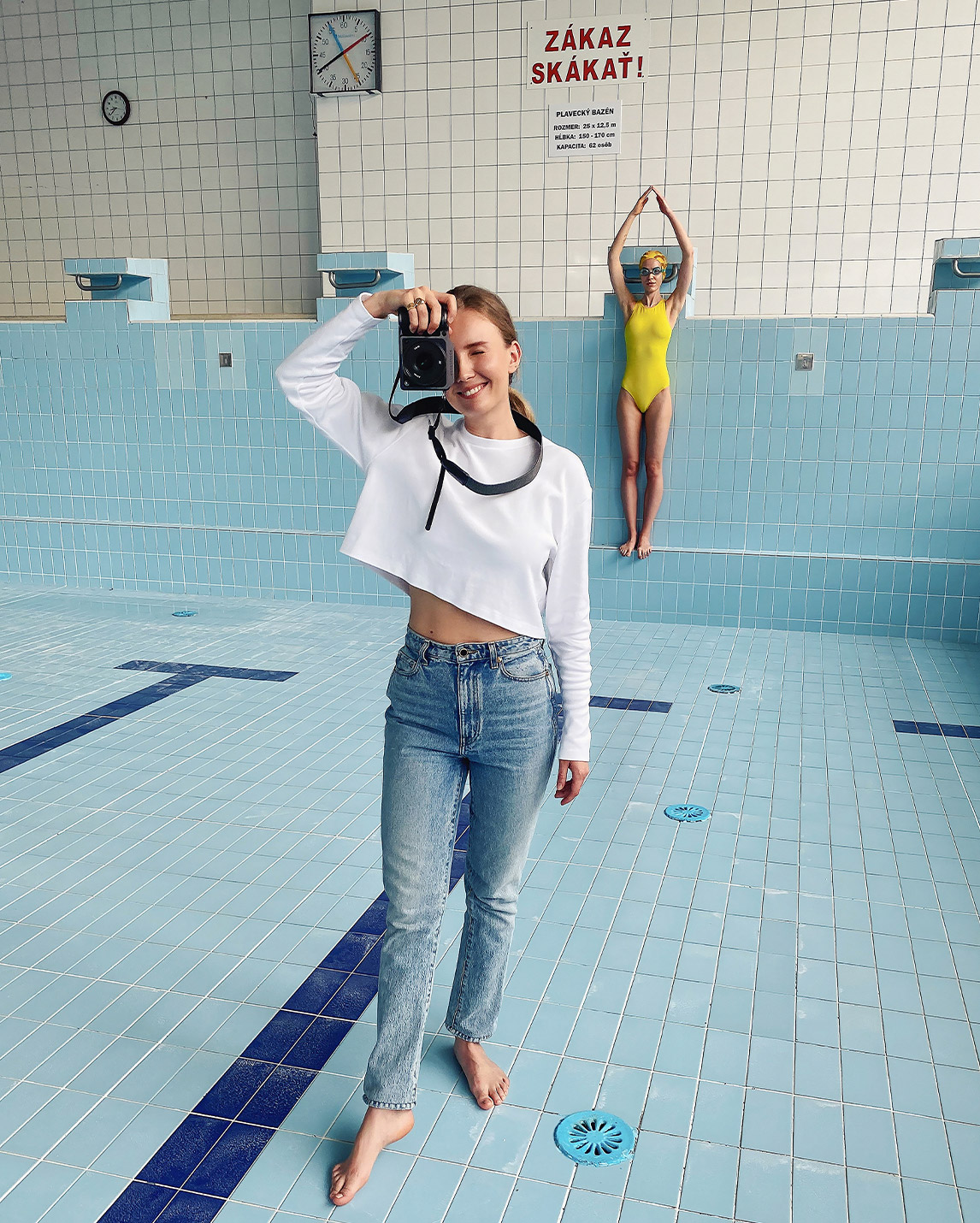
Your work is deeply inspired by your home country, Slovakia – how do your memories and nostalgia shape the work you make?
The Communist regime in Slovakia ended in 1989 so I didn’t personally go through it but I grew up surrounded by architecture and design from that era. Themes in my work, such as ‘at the doctor’ or ‘at the butcher,’ are memories from my childhood.
What is it that draws you to create grand, highly constructed works around routine or mundane activities, such as a doctor’s appointment or a swimming lesson?
I like to portray everyday mundane activities. I have concentrated on photographing people since the beginning of my career. They are the main source of inspiration – they fascinate me. I think a space without humans is empty and has no meaning. The main focus of my series was to harmonise humans and space.
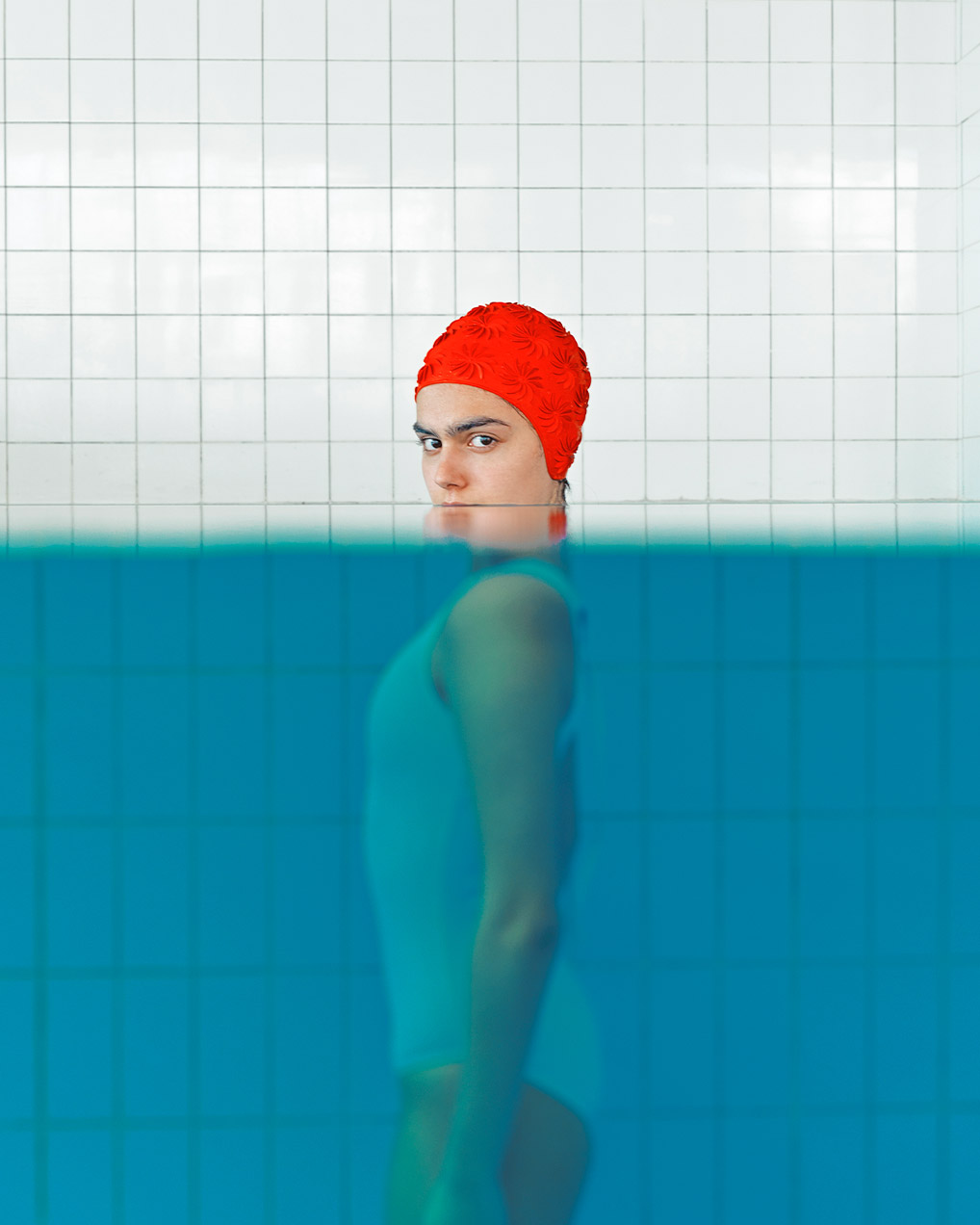
AK: Can you talk about the role that colour, composition and symmetry play in your work. How do you use them to define your vision?
MS: I believe colour is my domain. I can feel them really well and I make combinations that are in harmony with each other. When I was younger, I wanted to be a painter, so I expressed myself through pictures. I love colour, so that’s the focus of my minimalistic work. I love spotting symmetry in everyday life and incorporating it into my photography. There are lots of lines in architecture naturally, so I prioritise symmetry in my compositions. I control every single line in the picture. It’s very important for the final visual.
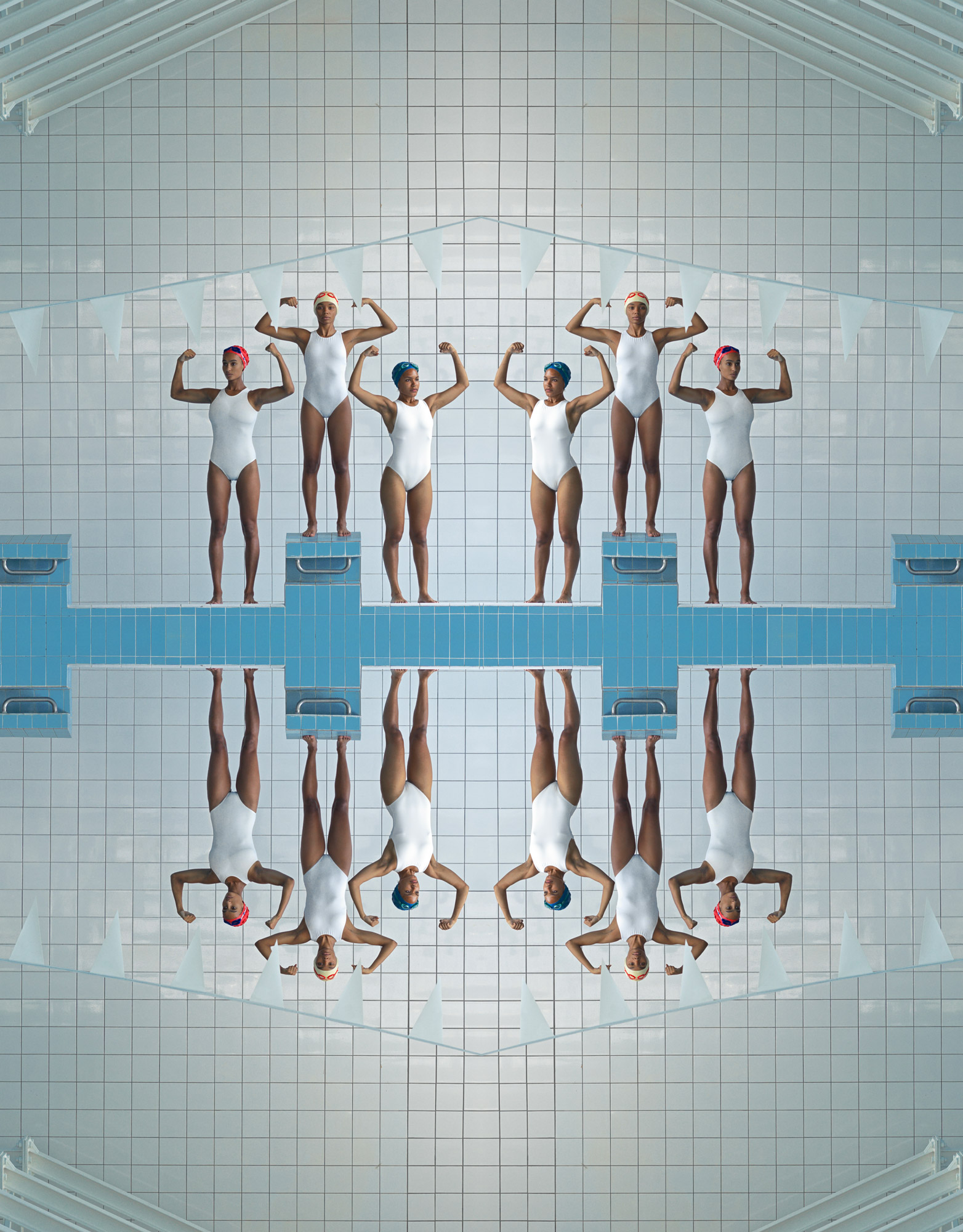
serenity
AK: Can you talk about the process of creating these images and explain how important the roles of set design, props, wardrobe and models are to the image you want to create?
MS: All of the above are very important to me as the photo must look good on the camera first and foremost. I’m a perfectionist and I love Photoshop and editing too. Ideas pop into my head and I follow my instincts. These scenes require a lot of preparation because I work with a big production team, including stage and costume designers. Usually we use original Socialist designs and costumes because they look minimalistic and futuristic at the same time. I call this style ‘FUTURO_RETRO’. The lighting also plays a big role. Ideally I use natural lights during the day and occasionally one big softbox. I see my work as a fictitious documentary in the style of art. I prefer shooting on location where there are large open spaces and a lot of daylight. I often stumble upon something interesting by accident and include it in the scene. I love these moments because it feels like fate.
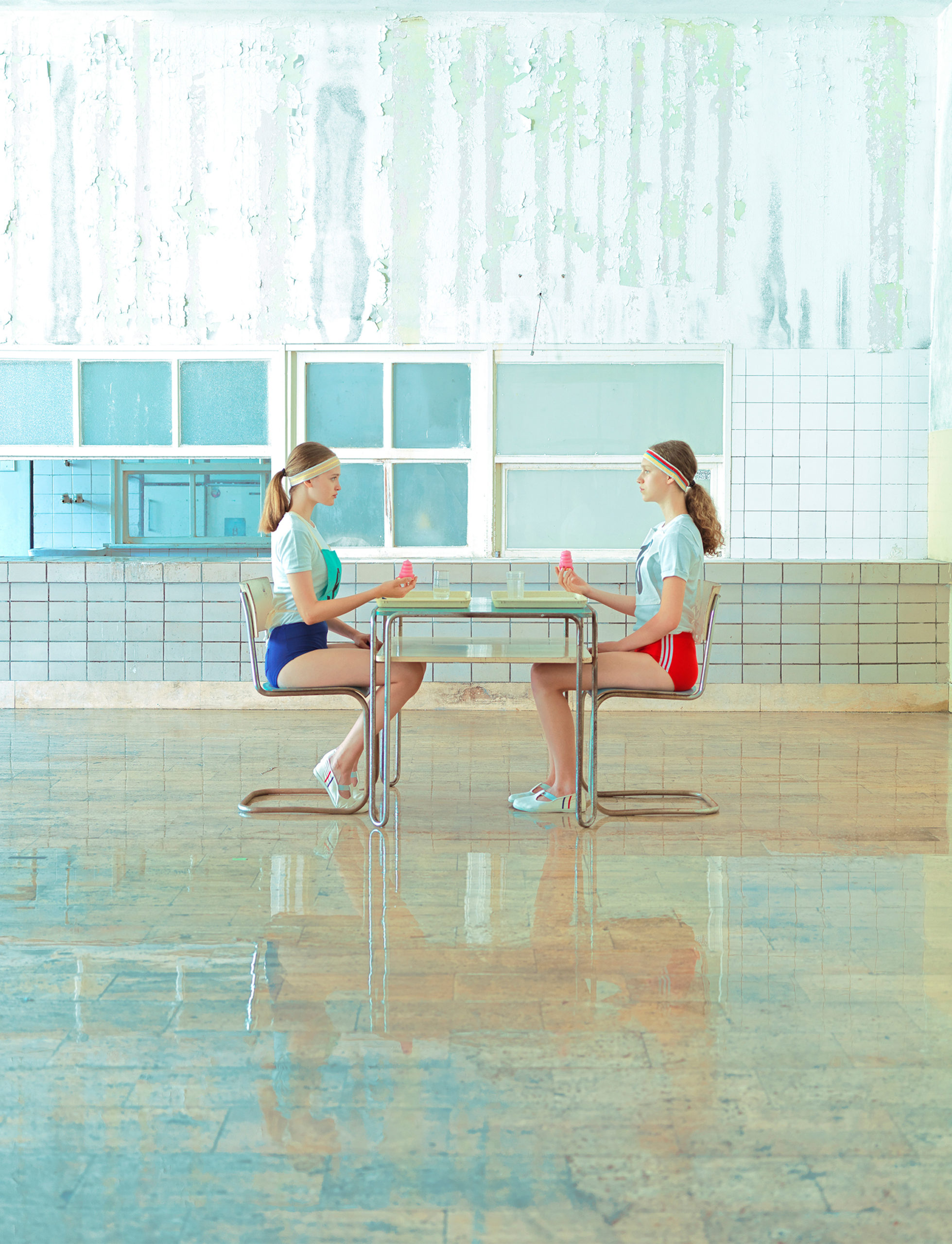
AK: Every image of yours is like a painting. If you were to liken your photography to a historical period of painting which would it be and why?
MS: I would definitely go back to the 19th and 20th centuries. In my photos you can see my inspiration is based on architecture, design, city, frozen movement. You could discuss artistic directions such as constructivism, futurism and maybe pop art and sometimes surrealism.
AK: Are you inspired by any specific paintings?
Abstract and modern artists are in my heart. I am not very influenced by artists, but I enjoy going to exhibitions of modern art. I admire Rothko, Cy Twombly, Basquiat, Oskar Schlemmer and others.
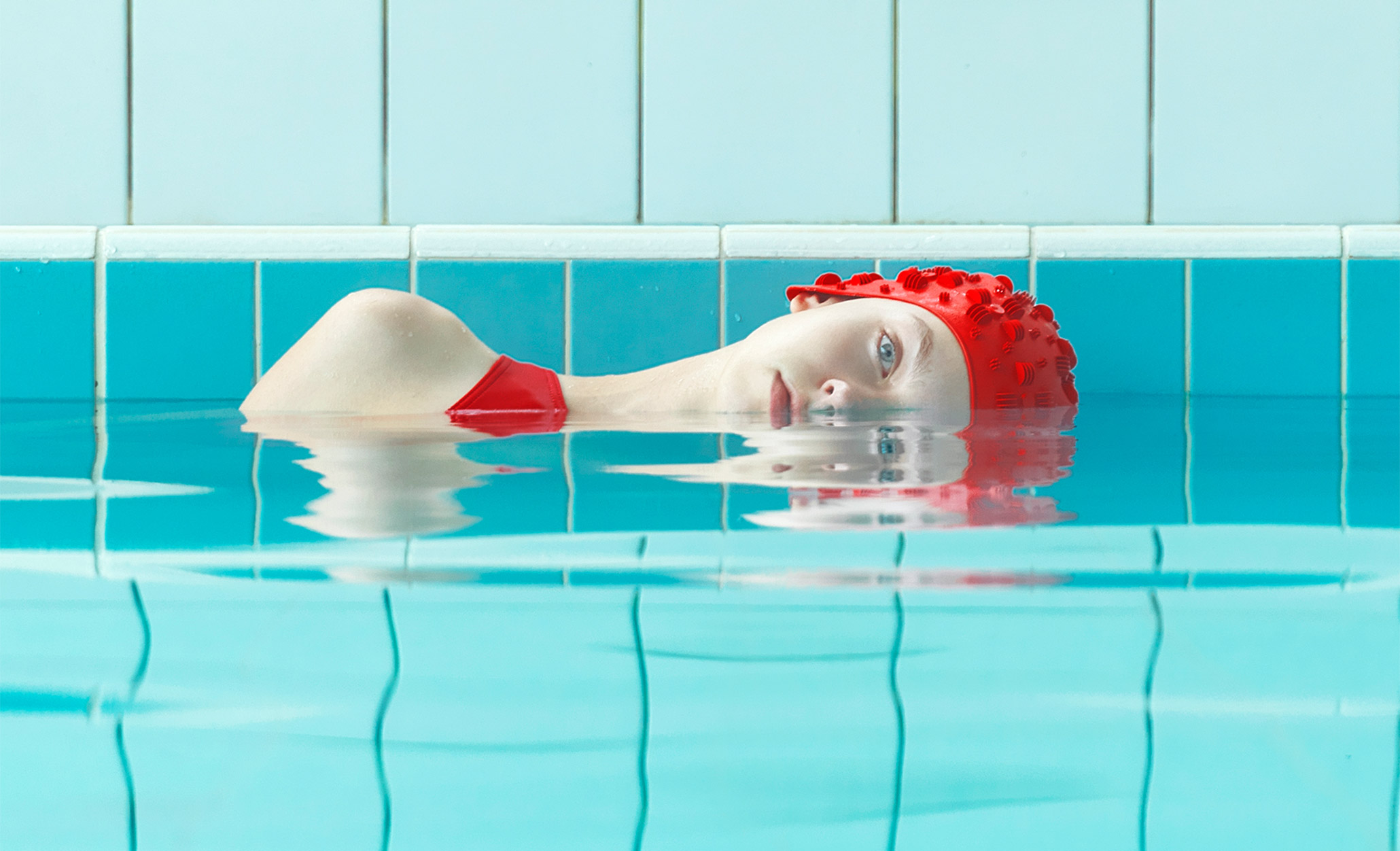
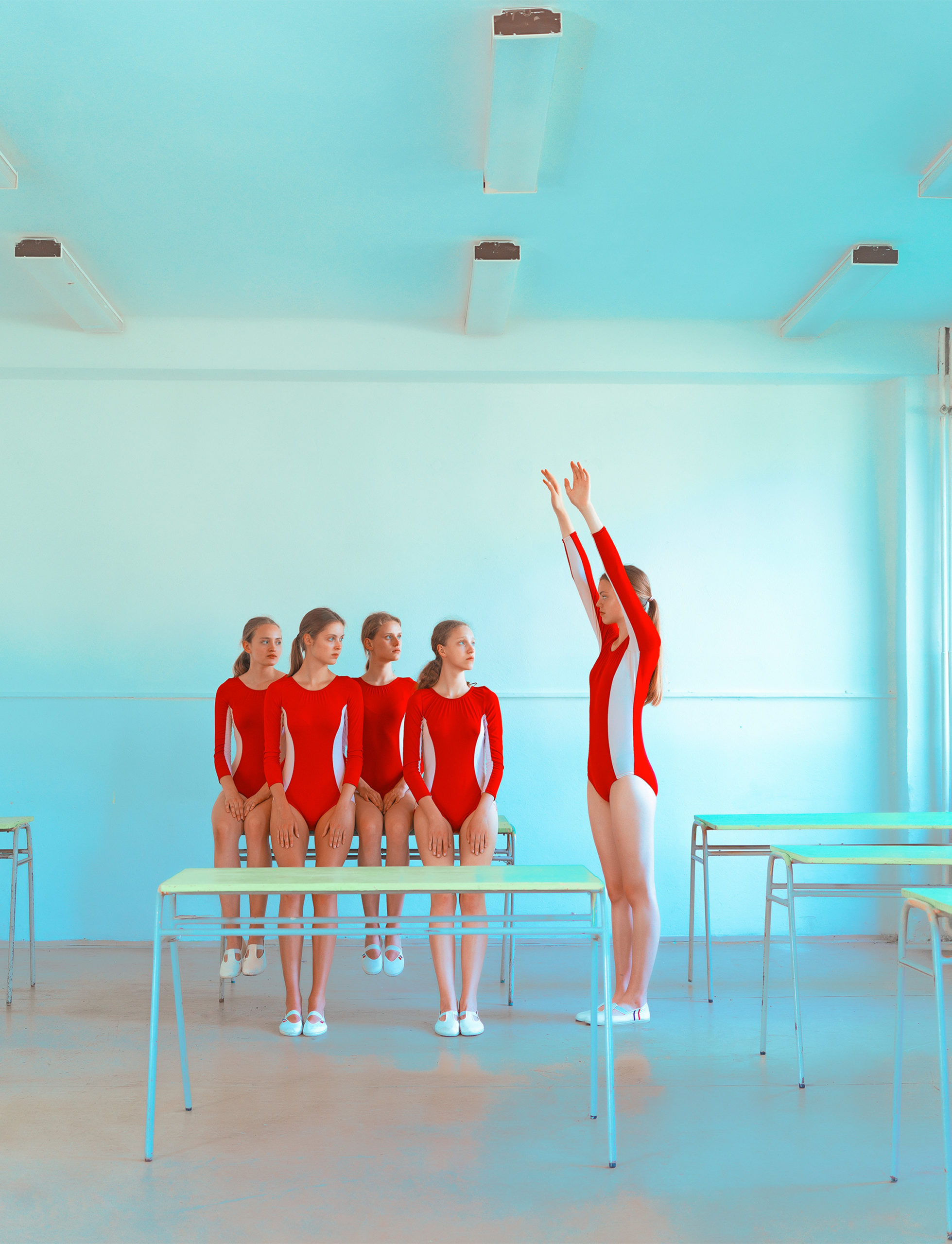
AK: On set you prefer working in complete silence. If you had to set your images to a genre of music, what would it be?
MS: I do prefer silence so I’m not sure if I can set my work to music. But I like listening to electronica and film music.
AK: I read in your book, FUTURO_RETRO, that it is important that the viewer use their imagination to make meaning from your images. Can you explain why this is?
MS: Having freedom is very important to me, so I want to induce the same feeling for people through my work. I create minimalist work with models where there is the absence of emotions so the mannequins become a way for spectators to place themselves into the frames.
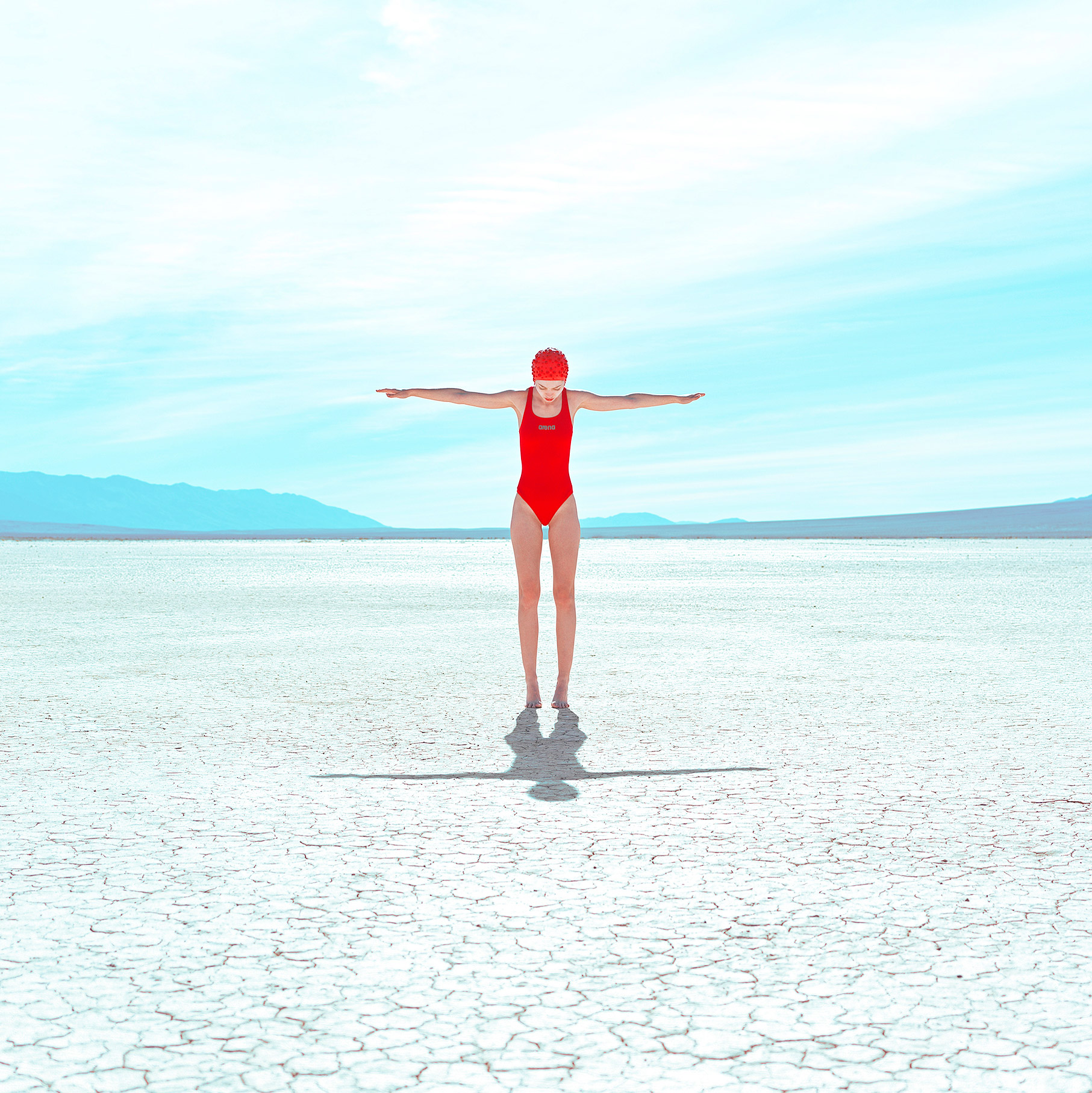
AK: ‘Lost In The Valley’ feels even more surreal than some of your other works – the people seem displaced in the desert, as if they’ve appeared out of thin air. Can you talk about this series and your reasons for creating it in the way you did?
MS: The series is about the harmonisation of people and space i.e. humans existing as individuals or as part of something bigger. This was the first time I shot in nature.
AK: ‘Girl Power’ feels like a change of direction, the people and bodies are much more active in the images – what inspired this change?
MS: I switched from static bodies to more movement. It shows a transition from a tense position into being more relaxed and in motion. Freedom is very important for me and my art process, and also for women and all people around the world.

AK: What do ‘Swimming Pool’ and ‘Girl Power’ mean to you?
MS: I created the series over four years with a subseries called ‘Girl Power,’ which symbolises hope, unity of womanhood, and the power of mutual support.
AK: You’ve been in and around the pool for years taking photographs. Do you like swimming?
MS: Yes, I swim but I tend to do standard holiday swimming. I can only do breaststroke.
AK: What’s the most Glorious photo that you’ve taken for your latest ‘Swimming Pools’ series?
MS: That’s a difficult question. I don’t have a favourite photo from that series, but I always support new photos. For example, I’ve started taking underwater pictures. It’s very demanding, but it excites me.

AK: What role does sport play in your work and in your own life? And why are you interested in harnessing it in your work?
MS: I love the costumes that athletes wear. I think sport is so important in society. Generally, I try to follow a ‘kalokagatia’ approach to life (derived from the Greek term ‘kalokagathia’, it means striving for mental and physical perfection). I’m also inspired by Communism and its famous Czechoslovak celebration of physical prowess, called ‘Spartakiada,’ in which thousands of young people performed synchronised movements in a stadium.
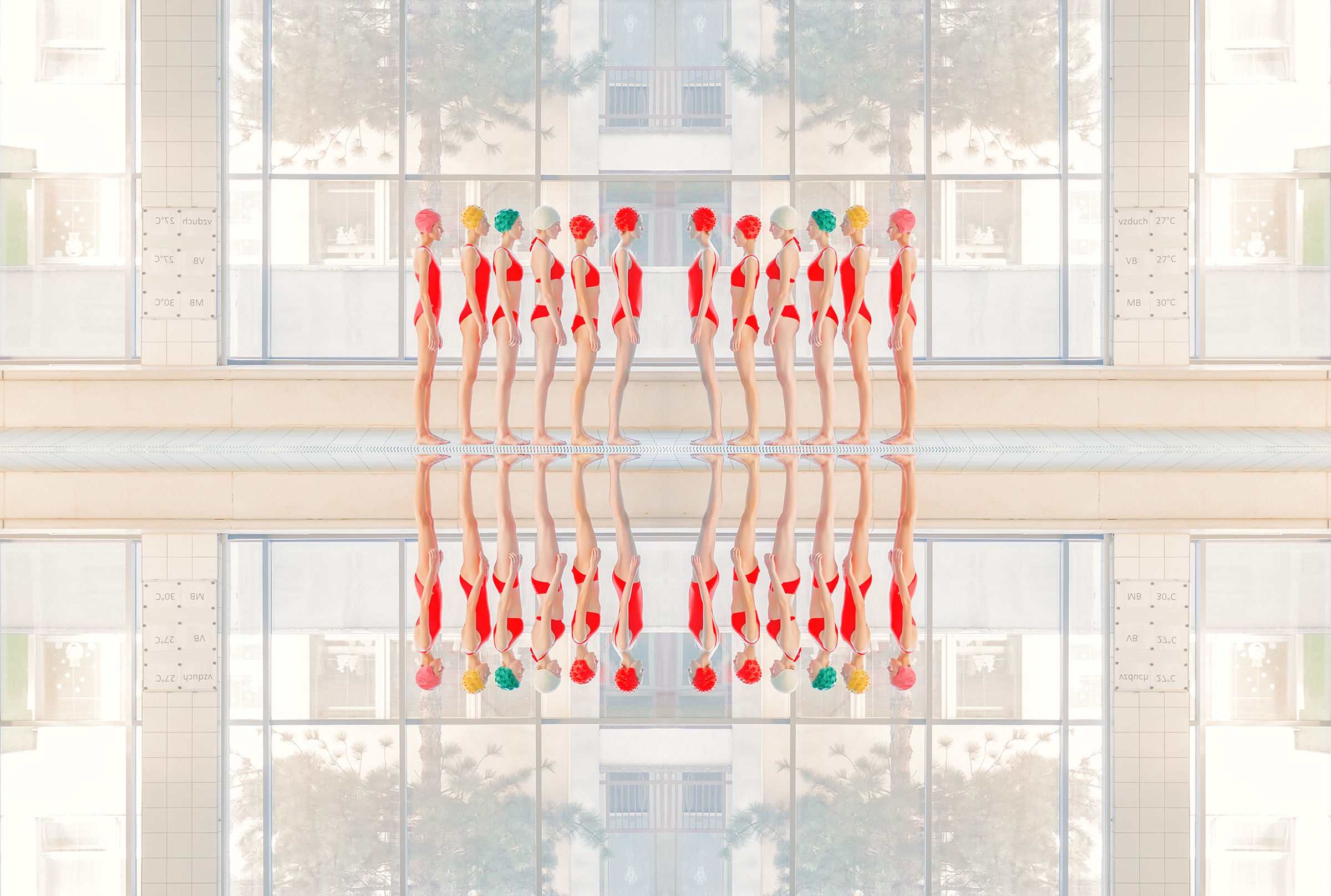
time
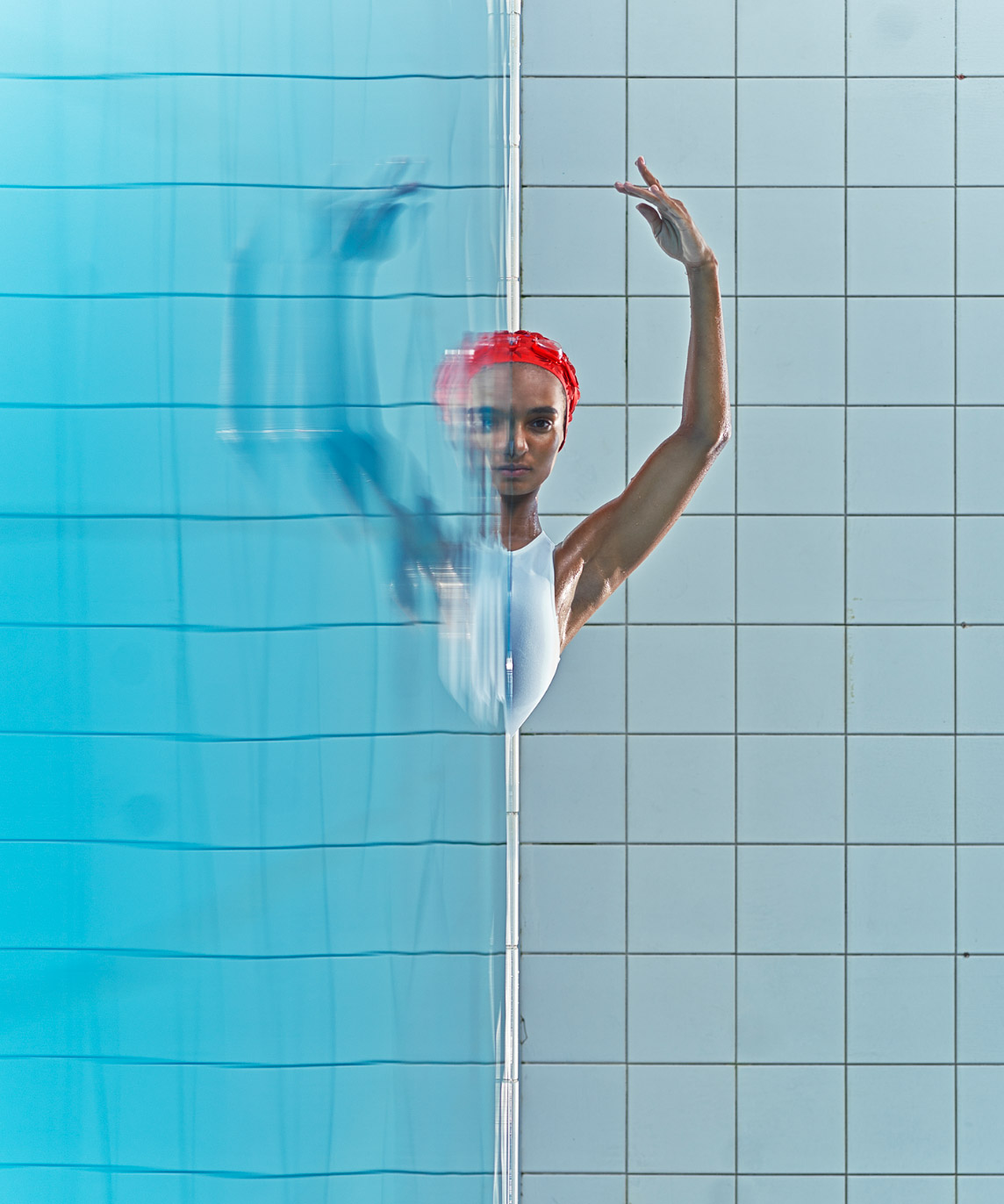
AK: Do you have any female sporting icons of your own and if so, who are they?
MS: My admiration goes to sisters Serena and Venus Williams. I like their story, how they grew up and how hard they worked. In general, I like athletes because I admire it when someone works on themselves. I think athletes know how to sacrifice a lot for their passion. Mostly they do not give up and try to press on and that is such an inspiring attitude.
AK: What do you want people to feel when they look at your work?
MS: Lightness, voltage, time – because that’s what I feel.
AK: What has been your moment of glory?
MS: My huge solo show in Taipei where my whole body of work was exhibited.
AK: What are you working on currently?
MS: I’m very excited and grateful becasue at the moment I’m preparing a huge solo show in the Art Culture Centre in Malaga, Spain, which will focus on my entire work. The show takes place from October 2022 until February 2023.
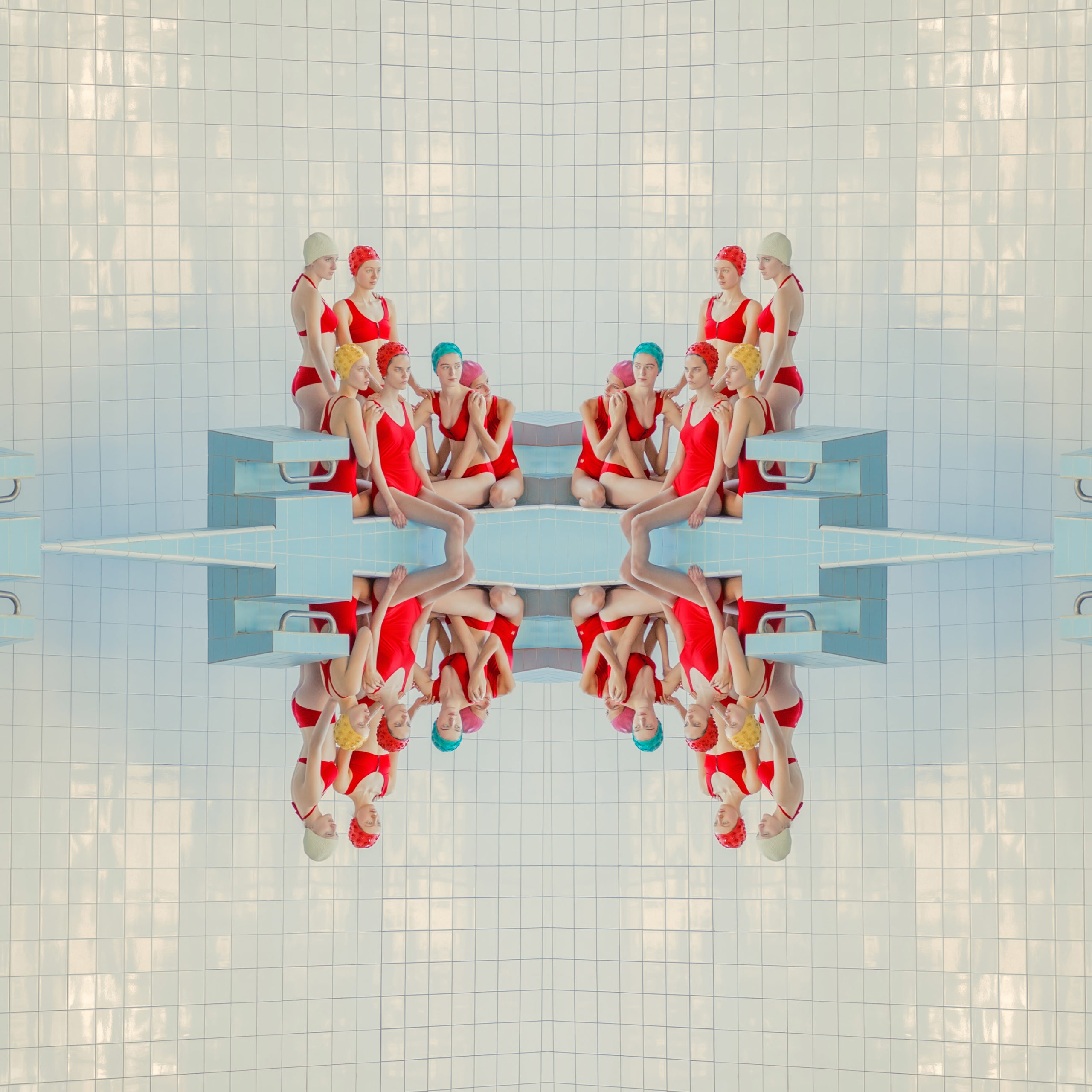
Photography by Mária Švarbová, Editorial Design by Root
To purchase an exclusive signed copy of Swimming Pools, click here.
